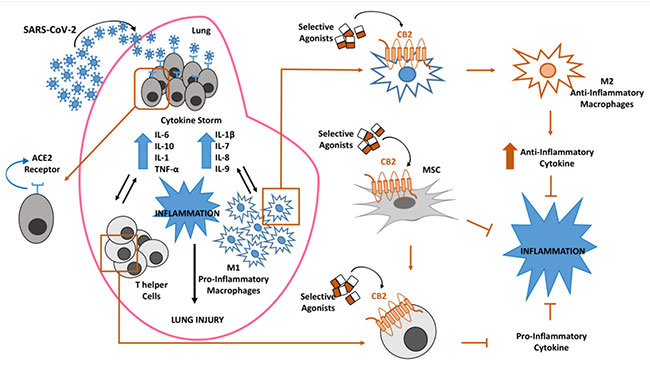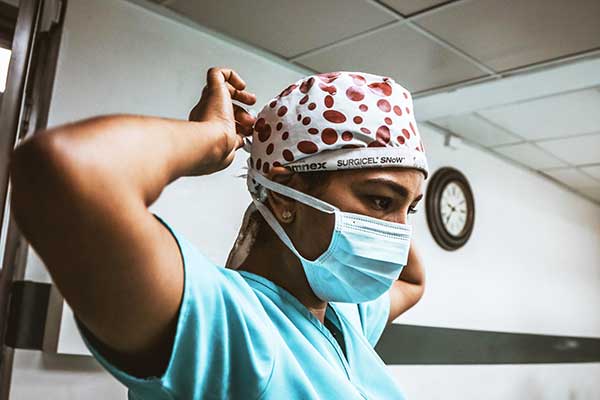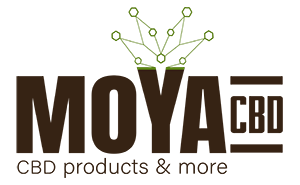Endo-cannabinoid System CB2 receptors as a therapeutic target in case of COVID-19 virus.
On May 27, 2020, an in-depth review was published of 5 leading physicians in the field of Phyto-cannabinoid research on the question of the efficacy of these molecules in the treatment of coronavirus patients. With the assistance of Dr. Yaakov Waksman, we translated the important parts of the article.
Cannabinoid Receptor Type 2: A Possible Target in SARS-CoV-2 (CoV-19) Infection
At the end of December 2019, a new virus (SARS-CoV-2 or CoV-19) appeared in Wuhan, China, causing a global pandemic. SARS-CoV-2 causes respiratory infection (mild to severe), which usually develops into pulmonary fibrosis with thrombosis in small lung vessels and even causes death.
Covid-19 patients can be found to have an increase in inflammation and immune response, a storm of cytokines, an increase in the incidence of pro-inflammatory M1 macrophages, and an increase in levels of stationary and mobile immune cells. Men are more susceptible to SARS-CoV-2 infection than women, most likely as a result of the production of oestrogen in women. Oestrogen lowers the activity level of CB2 receptors.
CBD works similar to oestrogen on CB2 receptors. Cytokine storm suppression is possible with the help of CB2R receptors. The role of the CB2R receptor in controlling inflammation and immune response is well documented in a large number of studies. The stimulation of CB2 receptors is known to limit and suppress the release of pro-inflammatory cytokines, shifts phenotype from macrophage towards the anti-inflammatory type M2 and improves the immune-armed properties of mesenchymal stromal cells. Mesenchymal stromal cells (MSCs) For these reasons we hypothesis that CB2 receptors can be a therapeutic target in case of COVID-19 virus.

Interpreted: Lung response after SARS-CoV-2 virus infection: On the surface of the virus there are spike proteins that are uniquely linked to protein (ACE2) that is expressed on the membranes of epithelial cells in the upper respiratory tract and lungs. The sensitivity of the lungs to SARS-CoV-2 infection depends on the specificity of the viral shift proteins that adhere to the Angiotensin-converting enzyme 2 receptors (ACE2) found on the membranes of epithelial cells (PAEpiC).)
The ACE2 protein is the virus’s infection bridge. Once a necessary connection is established between the virus and this protein, it can introduce its RNA into the epithelial cells. (Protein/ACE2 hormone is most common in the airways, it is responsible for raising blood pressure and performs the change in angiotensin) This interaction generates severe hyper inflaming caused by a storm of cytokines, an increase of pro-inflammatory M1 macrophages and T helper cells (T cells), all related to a vicious cycle in which each event accelerates the change of others. Selective stimulation of type 2 cannabinoid receptors (CB2) can be suggested over macrophages, T helper cells and mesenchanic stromal cells (MSC) to contain and cure the inflammatory condition in COVID-19 patients.
Conclusions:
- The researchers discussed the clinical properties of SARS-CoV-2 infection, including severe acute inflammation that causes a cytokine storm among COVID-19 patients. It is known that stimulating CB2 receptors exerts anti-inflammatory effects by reducing the release of pro-inflammatory cytokines, by transferring the M1/M2 ratio towards the anti-inflammatory macrophage M2 phanotype and by improving the corrective properties of MSCs.
- Oestrogens exert a protective effect on COVID-19, which explains the gender-specific differences (men/women) observed in SARS-CoV-2 infection. And this finding could also be related to the activation of CB2 receptors. We therefore offer the possibility of using CB2 as a pharmacological target for the treatment of SARS-CoV-2 infection.
- In the study, the researchers hypotheses that the selective stimulation of CB2 can reduce the inflammatory response in SARS-CoV-2 patients and improve their treatment. The stimulation of CB2 receptors can control the cascade cascade at several control points, reducing the production of a large number of cytokines, as opposed to the most selective action of monoclonal antibodies directed against specific interleukin. Compared to monoclonal antibodies, CB2 receptor stimulation has a immune system suppressant effect by reducing the prosperity and operation of immune cells and by producing antibodies, therefore, treatment of Phyto-cannabinoids from an external source can be very helpful in order to contain the worsening inflammatory response in COVID-19 patients
- Cannabidiol (CBD) is also involved in the control of inflammatory processes through a mechanism dependent on CB2. CBD causes the activation of CB2 indirectly, by raising AEA and 2-AG levels, and activating its anti-inflammatory properties by reducing the release of pro-inflammatory cytokines in an experimental model of contact allergic dermatitis (dermatitis).
All of these actions could have produced better knowledge of SARS-CoV-2 pathogenesta and significantly improved the treatment of COVID-19 patients. Currently, there are no commercially available agonists, approved for use in human subjects, which are uniquely linked to CB2 receptors. The synthetic agonists HU910, HU308 and JWH133 have a high uniqueness to CB2 receptors and it is recommended to study the role of this receptor in processes and biological diseases.
Additional points that arise from the article:
CBD and THC are not the only molecules in the cannabis plant (hemp, marijuana).
A new cannabinoid was recently discovered: ∆9-THCP bonded with high affinity to both CB1 receptors and human CB2 receptors. The affinity ∆9-THCP to CB1 is 30 times higher than that of THC, and is ten times more active in the CB2 receptor.
It has also been shown that 9-THCP has shown cannabimimetic activity (mimics cannabinoid activity) and is several times higher than the 9-THC phentyl homolog, even in low doses. However, further studies are necessary to develop commercial selective CB2 agnostics, and clinical studies with the cytocannabinoids available should be encouraged.

The studies and findings in the field of Phyto-cannabinoids and their efficacy as a natural treatment for infectious diseases have been flooding the network for more than 20 years and the efficacy of the CBD in particular never ceases to surprise. The complete information about CBD as a natural treatment for infectious diseases can be found on the following link: Prevention of infectious diseases
With the help of Dr. Yaakov Waksman, MOYA will continue to monitor and update on other developments in the field.



